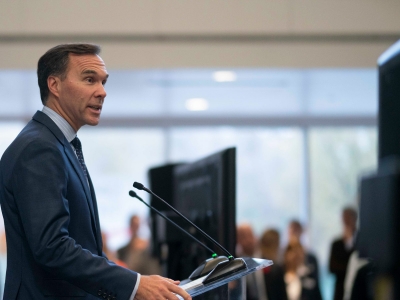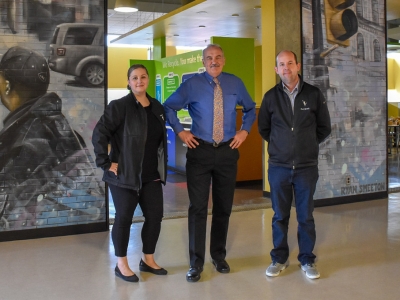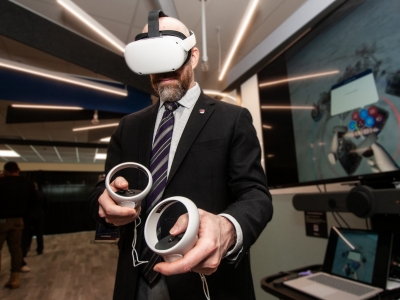By Dan Rubinstein
Joana Rocha spends a lot of time thinking about noise. Specifically, how to reduce noise inside and outside airplanes in flight. This is a safety issue, as well as a question of comfort for passengers and crews in a competitive global industry that expects traffic to double within two decades.
Rocha, a professor in the Department of Mechanical and Aerospace Engineering at Carleton University, is an aeroacoustics expert. Working in collaboration with Bombardier Aerospace and MDS Corporation, and with colleagues at the University of Toronto and the Université de Sherbrooke, supported by the Natural Sciences and Engineering Research Council of Canada and the Consortium for Research and Innovation in Aerospace in Québec, one of her main goals is to prevent hearing loss and mitigate other health problems.
Aircraft noise — which can come from the engine and turbulent air flow around the fuselage, wings and landing gear — is an economic issue too. Airports that face flight restrictions due to excessive take-off, flyby and landing noise can’t optimize their operations. Rocha also connects noise to the big picture: sustainability. An “elegant” airplane with an aerodynamic engine and structure will be both quieter and more fuel efficient.
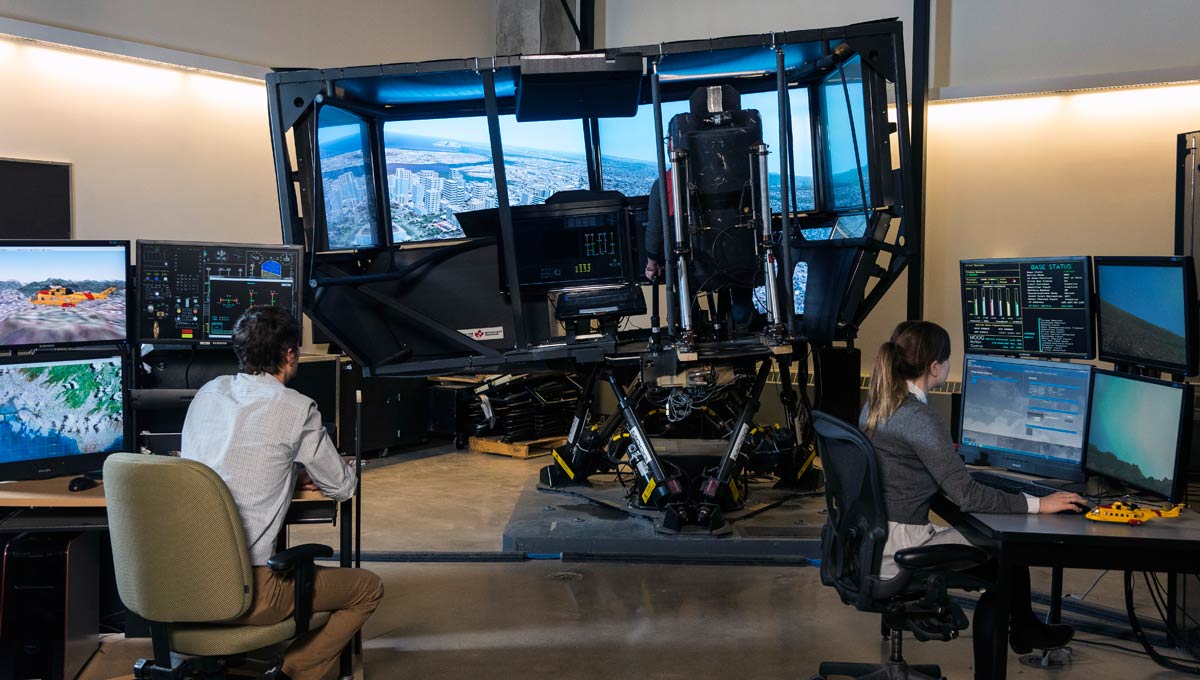
Rocha’s experiments, many of which are conducted in a low-speed anechoic (echo-free) wind tunnel in Carleton’s Mackenzie Building, explore how to predict aircraft noise due to air flow, and how to design and test quieter fuselage panels. Her results, derived by measuring how different panels respond to air flow in the wind tunnel’s test section, and then developing mathematical models to further analyze panels, could also be applied to wing design, and to vehicles such as cars and submarines.
“Aerospace engineering is my passion,” says Rocha, who came to Carleton in 2012 after earning an MA in Science and PhD at the University of Victoria and then working as a visiting researcher at NASA’s Langley Research Center in Virginia.
“Aeroacoustics is a combination of math and aerodynamics. You have to be very creative to come up with the right methodology.”
Rocha, who was born in Portugal, was always strong in math and physics, and wanted to become an aerospace engineer since childhood. As a girl, she played like all of her friends, but she also enjoyed disassembling and reassembling things like watches. At 12, she attended her first air show and wanted to see the airplanes up close and learn how they work.
Rocha earned an undergraduate degree in aerospace engineering in Portugal, a six-year program at the University of Lisbon and the Portuguese Air Force Academy. At first, her nurse mother and tradesman/writer father didn’t expect her to pursue this path.
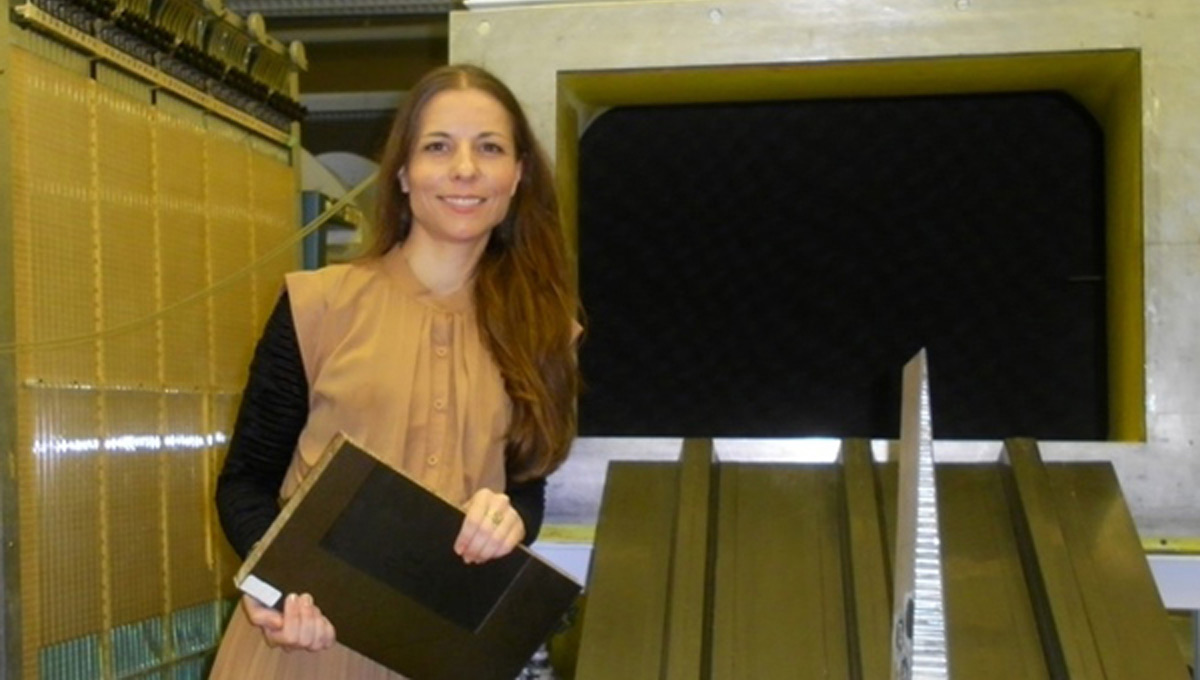
Carleton aerospace engineering professor Joana Rocha knows that change is an incremental process.
“They were surprised but never discouraged me,” she says. “They realized that I would have difficulties, yet they always respected the decisions that my sisters and I made.”
There’s one more thing you should know about Rocha: she loves art. She paints pictures and draws diagrams, deconstructing images and ideas piece by piece. And that is how she looks at the challenges facing — and opportunities for — women who seek careers in science, technology, engineering and mathematics (STEM).
Although the last few generations have seen tremendous progress toward equality, these fields, including aerospace engineering, remain predominantly male.
But a closer examination of how things have changed, and what strategies have led to success, shows that the push for gender parity does not have to be seen as a daunting uphill struggle, but rather a series of manageable steps toward meaningful change.
There’s a parallel between this transformation and the effort to reduce aircraft noise. Rocha’s thoughts on the latter sum up both challenges: “As an engineer, I work toward solutions for real problems. It’s going to take years. It will be a process. But I believe it is possible.”
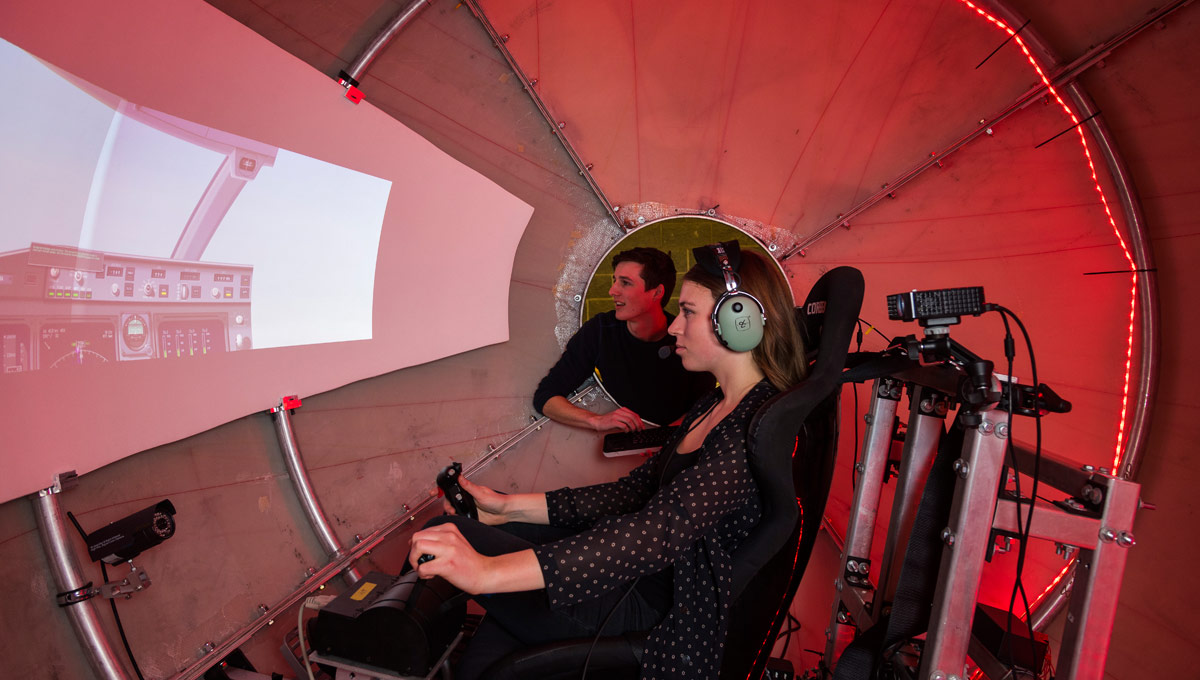
In 2013, more than 14,000 female undergraduates studied engineering in accredited university programs across Canada, according to the Ontario Network of Women in Engineering. That marks a steady climb from fewer than 6,000 women in 1991, but comprises 19 percent of total engineering enrollment, a figure that hasn’t changed much over the past 25 years as more male students enter the field as well.
Percentages of female students vary across engineering disciplines. Some areas, such as environmental, biosystems and geological, are around 40 percent. Others, including electrical, mechanical and computer, hover near 10 percent. No stats are available for aerospace.
In engineering faculties, 14 percent of professors are female in Canada, 15 percent in Ontario.
Professionally, although women constitute roughly 60 percent of Canada’s university student population and 48 percent of the workforce, 11 percent of engineers are female. Ten percent of American aerospace engineers are women, reports Forbes magazine, a figure that’s probably similar in this country.
Elsie Gregory MacGill was the first woman to break Canada’s aerospace barrier. Born in 1905 in Vancouver, MacGill became the first woman in Canada to earn an electrical engineering degree. “My presence in the University of Toronto’s engineering classes in 1923,” she once said, “certainly turned a few heads.”
In 1929, she graduated from the University of Michigan with a master’s in aeronautical engineering — a North American and, most likely, world first.
MacGill worked for Fairchild Aircraft Ltd. in Longueuil, Que., where she helped design the first all-metal aircraft built in Canada, and later became the chief aeronautical engineer for Montreal’s Canadian Car and Foundry Company. At Can-Car, which was eventually absorbed into Bombardier, MacGill worked on Hawker Hurricane fighter airplanes, which were instrumental in the Second World War.
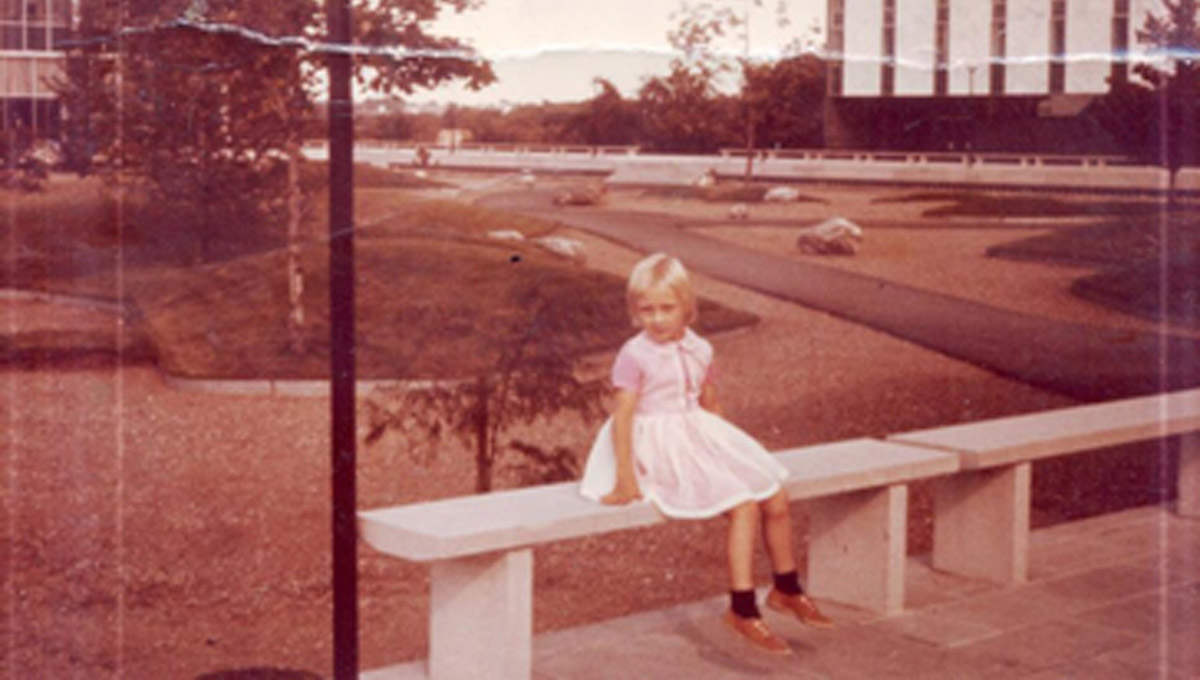
Emeritus engineering professor Moyra McDill on one of her first trips to the Carleton campus.
One of Carleton’s female aerospace pioneers was Moyra McDill. In the mid-1960s, she started coming to the university while still in elementary school — her mom was an Ottawa teacher who took summer courses on campus, so eight-year-old Moyra was signed up for Carleton summer camps, including one memorable experience sleeping outside under the stars behind the gym.
“That was my first all-nighter at Carleton,” says McDill, who went on earn a bachelor’s degree, master’s and PhD at the university, and then became the first female engineering professor to be promoted from within. “I did many more.”
McDill, who is now a visiting lecturer at a pair of universities in Sweden, remains an emeritus professor in Carleton’s Department of Mechanical and Aerospace Engineering.
An expert on the numerical analysis of manufacturing processes such as welding, she did structural analysis on military helicopters and airplanes for a private company in Nova Scotia between her two graduate degrees. At Carleton, she helped develop the department’s aerospace materials course and served as Dean’s Advisor for Women in Engineering.
While in this role, in 1991, McDill and Marilyn A. Johnston, a master’s student and Ravens volleyball star, co-authored a paper titled “Tracking the Gender Barrier Through Declining Interest in Technology” for a British conference on women in engineering. “The objective of this research,” the introduction declared, “was to identify the age at which the gender barrier seriously affects young women.”
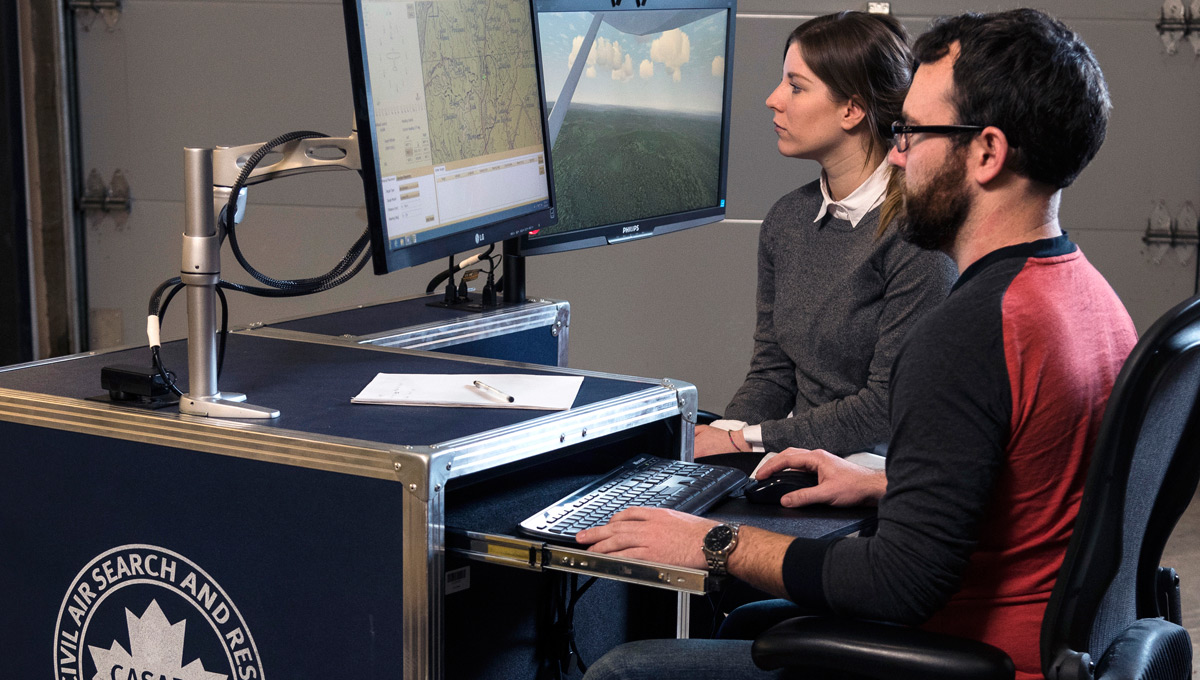
The study used data from four Canadian universities, including Carleton, that ran enrichment mini-courses for children and teenagers. Looking at the four main “content areas” of these courses (arts, social sciences, science, engineering), as well as gender and age data, McDill and Johnston came to a conclusion.
“This research shows that the gender barrier becomes a significant factor in the lives of girls as early as age nine and is firmly in place by age 13. Efforts to address low enrolment of women in subjects such as engineering often target women between the ages of 16 and 18. The authors feel that programs aimed at these women may add to the numbers in engineering at the expense of the science subjects, which also suffer from low female enrolment.
“Clearly, to increase the number of women in technologically based programs, society must remove a gender barrier that affects girls in their early school years. It is the authors’ opinion that programs to alleviate this gender barrier should be geared to the needs of children younger than age nine.”
McDill and a pair of colleagues published a follow-up study in 2000. Thanks largely to outreach programs which introduced engineering to girls at a young age, they found that “while there is still a gender barrier for engineering, it is easing.”
See “Charting a New Path: Outreach Programs at Carleton Encourage More Girls to Study Engineering”
For her, McDill quips, going into engineering “probably runs in the family.” Her father was an army officer and engineer, and she played with tools and got stuck in the wet concrete of the house her parents were building.
As a university student, she doesn’t recall feeling any different than her male classmates. “We were a group and we all worked really hard, men and women. Gender wasn’t an issue.
“I had two big brothers,” she adds, “and had spent lots of time hanging around with guys.”
Still, McDill chose to stay away from some of the rowdier social gatherings on campus, and she heard the occasional sexist remark — “just like everywhere else in society back then.”
In March 1989, shortly after taking off during a snowstorm in Dryden, Ont., en route to Winnipeg, Air Ontario Flight 1363 crashed into trees at the end of the runway. Twenty-one passengers and three crew members were killed.
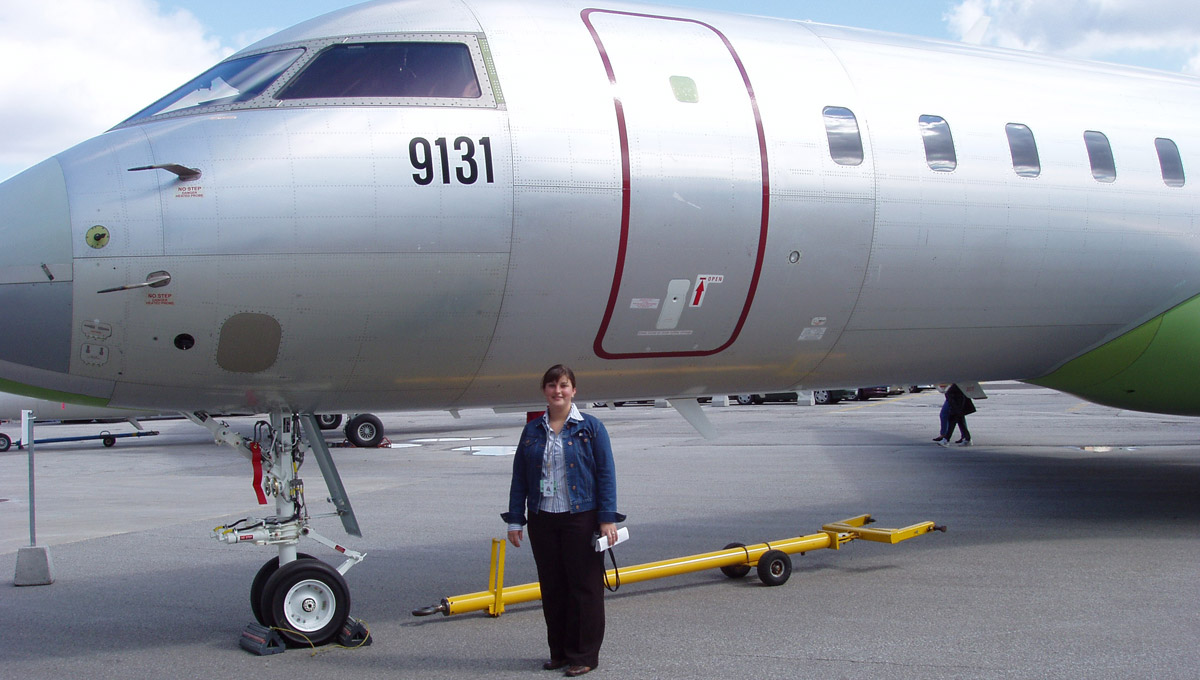
Eleven-year-old Danielle Calder (née Godin, pictured above) was on the plane with her parents and sister. They survived, along with 41 others. Her father received an award for helping save 14 lives.
Calder, who is from Thunder Bay, Ont., which is where flight 1363 originated, loved airplanes and wanted to become a pilot. The accident steered her in a slightly different direction.
“I wanted to prevent what happened to me from happening to other people,” says Calder, who earned a bachelor’s degree in aerospace engineering at Carleton in 2001. “I needed to learn why it happened. I needed to understand.”
A well-rounded high school student with a technical mind, Calder specialized in aerodynamics propulsion and vehicle performance at Carleton. Like McDill, she says that the complexity of the material helped smooth over the gender imbalance.
“Everyone was there to work. It’s such a challenging program, you had to find a way to work with everybody. I have a lot of fond memories of staying at school to study very very late at night and having great camaraderie with everybody. It was great to know everybody in the program, which is unusual at a large university.”
Calder’s highlight was participating in a fourth-year major design project on unmanned aerial vehicles. One of her biggest hurdles was the lack of female role models and mentors.
As a woman, she was recruited by employers looking to diversify their workforce, and accepted a job as a methods engineer at an aircraft manufacturing plant in Toronto. Calder advanced quickly and became a preventative and corrective action manager, satisfying some of her post-crash motivation.
“At Carleton, I had learned a lot of good critical thinking, time management and organizational skills,” she says. “Technical skills are one thing, but we learned how to learn: when you don’t know something, how do you figure it out?
“In the working world, being able to recognize the limits of your skills and knowledge is important. So is being being to clearly and effectively communicate the technical side of things.”
But gender attitudes on the job weren’t as progressive as they were at university, she discovered: there were Playboy pictures inside toolboxes, and sometimes male colleagues would not take her seriously.
Nonetheless, Calder liked the work, but when she moved to British Columbia and looked into aerospace jobs, they were limited and she was only offered positions that were not a good fit for her skill set. So she switched gears and started to teach math and science at a high school, and now teaches all subjects to students in grades 6 and 7, bringing her aerospace experience into the classroom and encouraging girls to stick with STEM subjects.
“I share my love of math, science and engineering with them,” she says. “At that age, they’re open to different influences, and they haven’t heard what girls ‘should’ and ‘shouldn’t’ do. You can show them how much fun problem solving and engineering are.”
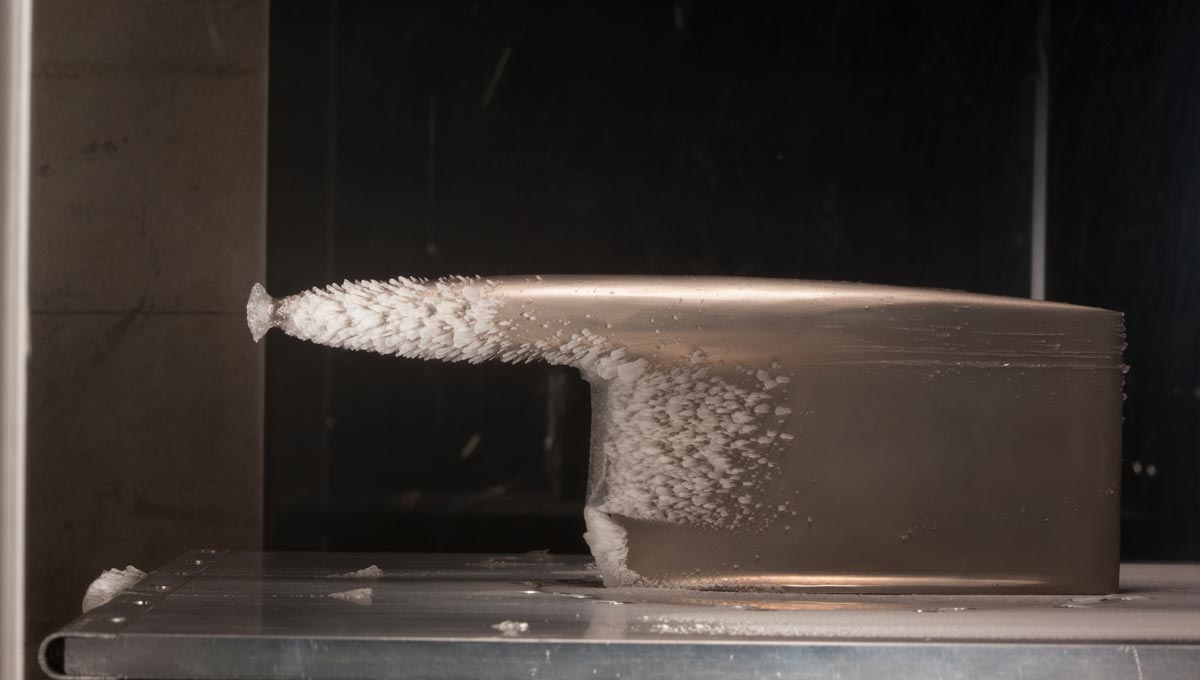
An icing test under way in an NRC wind tunnel.
Often, Calder believes, generalist elementary school teachers aren’t as passionate about math and science as other subjects. By the time a specialist STEM teacher comes into the picture in high school, a student may have lost the opportunity to love a subject.
Calder misses the excitement and challenge of the aerospace industry. She doesn’t miss the long hours, travel and the difficulty of stepping back into a project after a maternity leave.
Still, she has no regrets. And the tragedy that sent her on this trajectory will always be a presence in her life.
An inquiry after the accident blamed the crash on ice on the wings and came up with 187 recommendations, including a new de-icing protocol.
“We’re the reason airlines de-ice your plane the way they do,” says Calder. “My dream goal was to make whatever I worked on as safe as possible if I did my job properly. There are a lot of people involved in every aerospace project, but I always made sure I did my best to do everything right.”
At the National Research Council (NRC) in Ottawa, Carleton alumnus Catherine Clark is also working on de-icing issues.
As a member of the NRC’s aviation aerodynamics group, she helps Transport Canada develop holdover time rules for airplanes — the amount of time a plane has to taxi and take off after being sprayed with de-icing fluid.
These rules, which take into account factors such as takeoff speed, temperature, and snowfall volume and intensity, are updated every year to include information from a research program Clark runs at the NRC’s Propulsion and Icing Wind Tunnel.
She also uses the NRC’s Altitude Icing Wind Tunnel to test in-flight icing conditions and coatings that deter ice from forming on wings. Helping clients certify their products for new icing regulations will help prevent accidents like Air France Flight 447, which crashed into the Atlantic off the coast of Brazil in 2009.
Clark, who has both a bachelor’s and a master’s in aerospace engineering from Carleton, considered continuing on to a PhD, but the opportunity to start applying what she had learned at school was too tempting.
“For what I wanted to do, in the experiential field, I needed a master’s with hands-on experience,” she says. “After I graduated, I wanted to get out there and do things that matter to industry.”
Like all of the women interviewed for this article, Clark knew she was entered a male-dominated field, but her parents and university experience were encouraging.
As an engineer, she has encountered older men with the generational attitude that women couldn’t or shouldn’t take on certain tasks. But that mindset is increasingly rare. These days, she says, “if you can do the work, that’s what matters.”
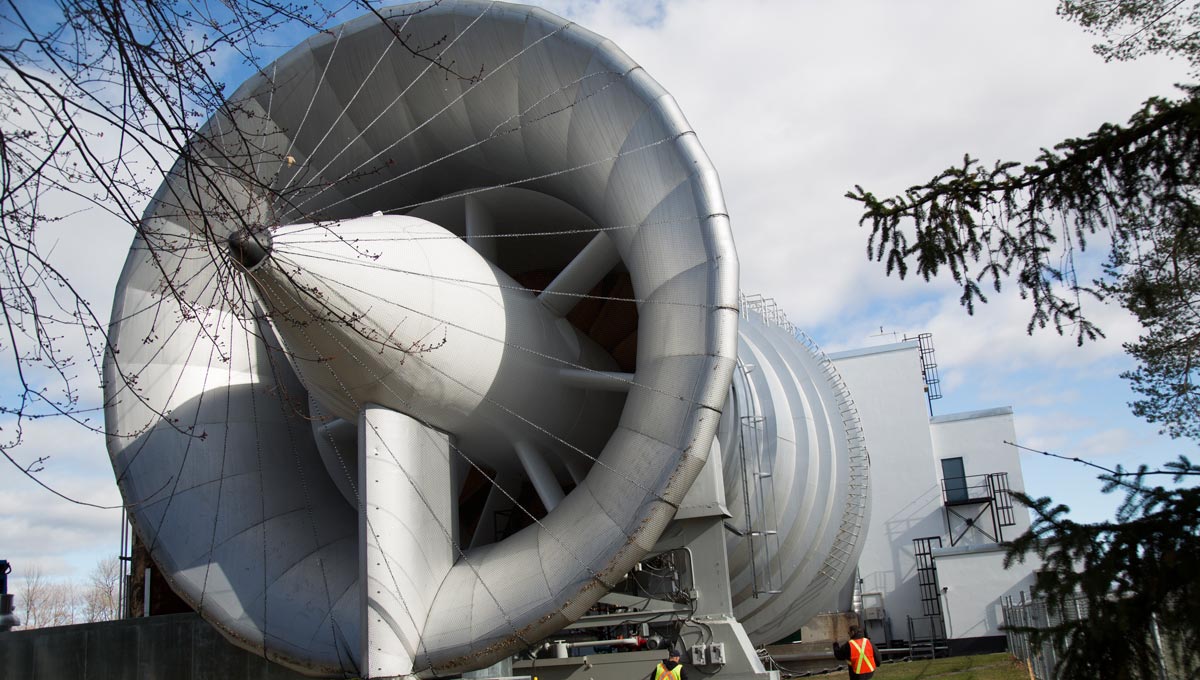
Clark has noticed more female hires at the NRC over the last few years. About one-third of the members of her group are women. This shift may in part reflect the fact that in addition to technical skills, she believes that communication skills matter. Aerospace engineers have to be able to talk to clients and colleagues and share their knowledge.
A survey of large STEM companies in the United Kingdom came up with a list of 10 skills that employers want, among them: communications and interpersonal skills, organizational skills, teamwork, ability to learn and adapt, negotiating skills, initiative and self-motivation.
Beyond working at the NRC, Clark teaches aerospace courses as a contract instructor at Carleton. There are more female professors in the department now than when she was a student, though she’s not consciously trying to be a role model — mostly, she wants to pass on and bolster her own knowledge.
“Even if you think you know something very well,” she says, you really learn it when you teach it.”
In her spare time, Clark, who has a pilot’s licence, flies Cessnas as a member of the Ottawa Flying Club.
“I love the freedom of it,” she says. “It’s quiet. It’s a totally different perspective. It requires concentration, so you leave behind any stress on the ground and are relaxed when you land.”
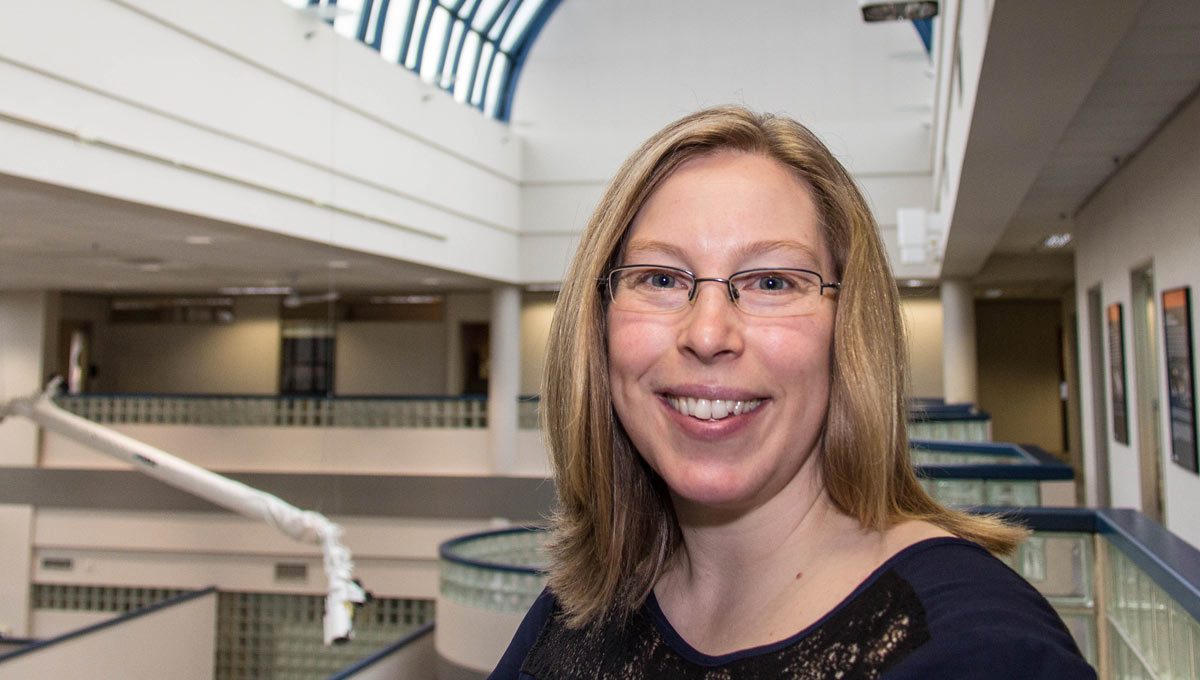
“My children know that I build and fix satellites,” says Carleton alumnus Yolanda Brown.
As the mother of two young children, Carleton alumnus Yolanda Brown embraces the opportunity to serve as a role model.
Brown, who graduated with a bachelor’s of aerospace engineering in 2001, works in space systems design for MDA in Richmond, B.C. She’s part of a team that develops, tests and deploys small satellites for customers.
She’s the operations lead on Sapphire, a 148-kilogram satellite launched by Canada’s Department of National Defence in 2013 to help prevent collisions between orbiting satellites and flying debris.
“Space is actually quite messy right now,” says Brown, who constantly monitors Sapphire’s data flow, communicating with the satellite during each of its dozen or so daily passes over the MDA antenna in Abbotsford, B.C.
“This work is stressful and fun,” she says. “My regular once-a-week calibrations have become old hat, but when there’s an anomaly — like when it’s hit by a radioactive burst — you have to do a little bit of detective work to figure out what happened, and then try to fix it.”
The “tough” aerospace program at Carleton prepared her for this work. And because the space stream is smaller than others, students really had to band together and support one another.
Like Danielle Calder and others, Brown has encountered discrimination in the workforce, but she also attributes this to an older generational attitude that will take time to shift. And she knows that just as previous generations had to battle to break through the gender barrier, today’s female engineers have to keep pushing.
Brown belongs to a Women in Leadership group at MDA, where 26 percent of STEM employees are women, but the company wants more.
There’s still a stigma around maternity leave, however, and even after women return to work, there’s a stereotype that they’re not as committed to the job as a man might be because of child care responsibilities.
“You have to constantly prove yourself,” says Brown. “If you’re not willing to fight for it, it can be tiring.
“It’s not just normalizing women in the workforce that we have to work on,” she continues. “It’s also men not being in the workforce — men knowing that they can stay at home with their kids, that their role isn’t only to be a good provider.”
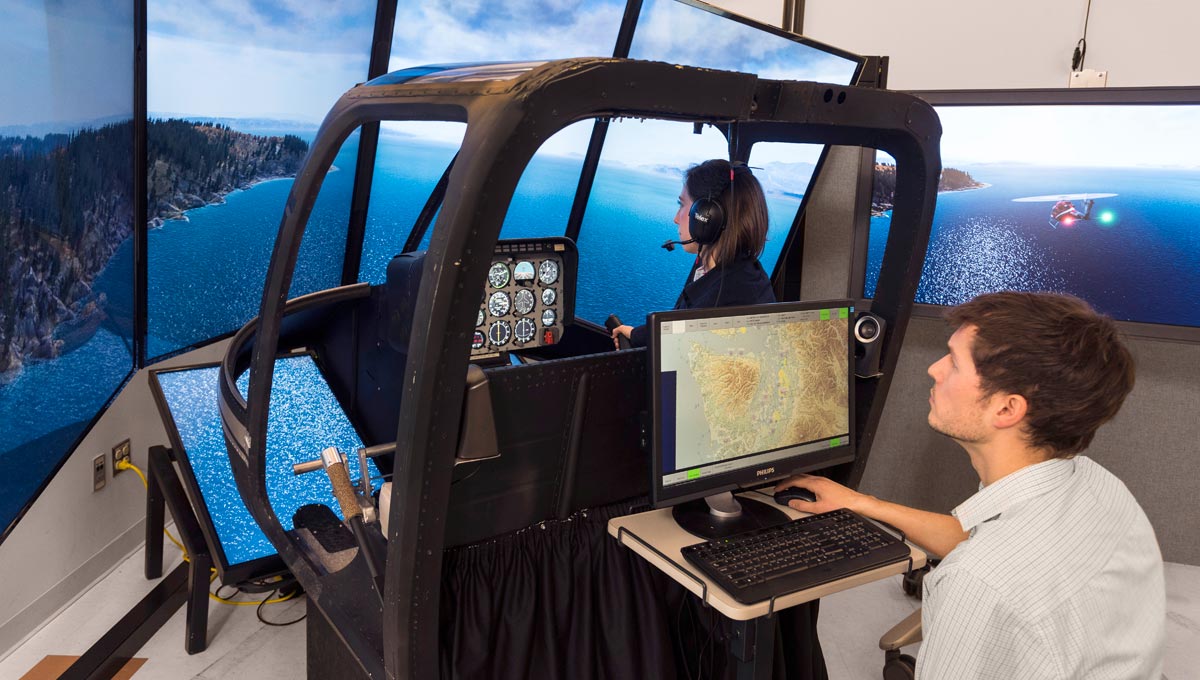
Brown challenges stereotypes by speaking to the classes her children are in, even when her son was in kindergarten.
“It takes time, but one thing we can do as women in this field is talk to young girls at school. We need to make it totally normal that an engineer can be a woman. It’s never too early, and you can reinforce these ideas every year.
“If you see a woman in a certain role many times, it becomes normal. My children know that I build and fix satellites.”
Joana Rocha has the same idea. She makes an effort to connect with female students, to stay in touch with female alumni, to serve as a mentor — and she’s planning to start an outreach program that will bring conversations about aerospace engineering to elementary schools in Ottawa, where her daughter is a student.
Rocha, who takes her daughter to both the city’s aviation museum and the art gallery, wants to bring hands-on activities exploring flight and airplanes into the classroom for 10-year-olds.
Aerospace engineering is not all “heavy work” with “heavy machines,” she says. It involves creative and psychology too. “Engineering allows you to develop many different skills. There’s a real beauty to it.
“We need to shift not only the mindset of young girls, but also their parents, so they will encourage their daughters to try it — for me, engineering always felt natural. My parents and amazing teachers created the sparkle.
“I want to do this for boys and girls,” she adds. “It’s a mistake to think they’re different. That’s how you attract more girls into this field. We need to create programs that attract all students to aerospace.”
Wednesday, July 6, 2016 in Aerospace, Engineering, Research
Share: Twitter, Facebook

